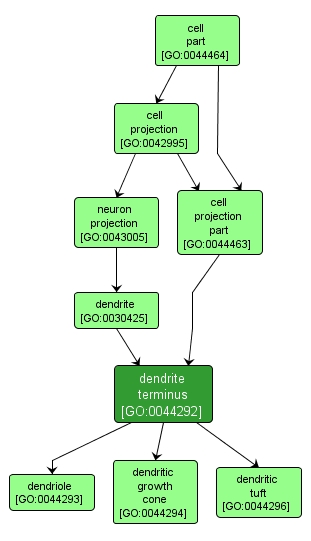GO TERM SUMMARY
|
| Name: |
dendrite terminus |
| Acc: |
GO:0044292 |
| Aspect: |
Cellular Component |
| Desc: |
A structure at the distal end of a dendrite adapted to carry out a specific function, e.g. dendriole. |
Synonyms:
- dendrite terminal specialization
- terminal specialization of a dendrite
- dendrite terminal
|
|

|
INTERACTIVE GO GRAPH
|














